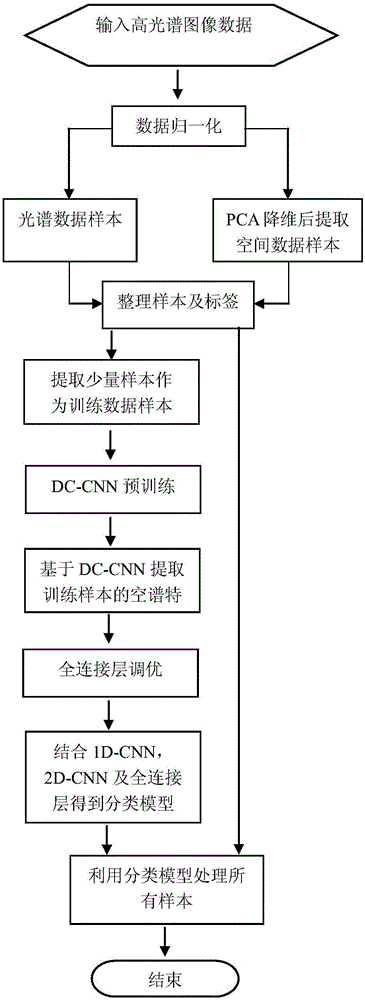Dual-channel convolutional neural network-based spectral-spatial cooperative classification method for hyperspectral images
A convolutional neural network and hyperspectral image technology, applied in the field of space-spectrum joint hyperspectral image classification, can solve problems such as data overfitting, expand the application range, reduce overfitting problems, and improve classification accuracy Effect
- Summary
- Abstract
- Description
- Claims
- Application Information
AI Technical Summary
Problems solved by technology
Method used
Image
Examples
Embodiment Construction
[0033] Now in conjunction with embodiment, accompanying drawing, the present invention will be further described:
[0034] Step 1: Input hyperspectral image data, according to the formula Normalize the data. where x ijs Represents a pixel in the hyperspectral image, i and j respectively represent the coordinate position of the pixel in the hyperspectral image, s represents the spectral segment of the hyperspectral image, and the existing hyperspectral image generally contains 100-240 spectral segments , x ··smax 、x ··smin Respectively represent the maximum and minimum values of the three-dimensional hyperspectral image in the s-band.
[0035] Step 2 extracts the original spectral data samples and spatial data samples. For each pixel to be classified, extract all the information within the eight neighborhoods as the spectral data sample of the pixel L represents the total number of spectral segments. Compress the data through PCA dimensionality reduction, retain the ...
PUM
 Login to View More
Login to View More Abstract
Description
Claims
Application Information
 Login to View More
Login to View More - R&D
- Intellectual Property
- Life Sciences
- Materials
- Tech Scout
- Unparalleled Data Quality
- Higher Quality Content
- 60% Fewer Hallucinations
Browse by: Latest US Patents, China's latest patents, Technical Efficacy Thesaurus, Application Domain, Technology Topic, Popular Technical Reports.
© 2025 PatSnap. All rights reserved.Legal|Privacy policy|Modern Slavery Act Transparency Statement|Sitemap|About US| Contact US: help@patsnap.com



